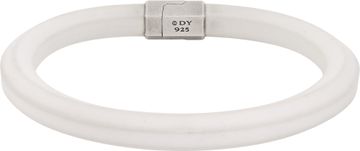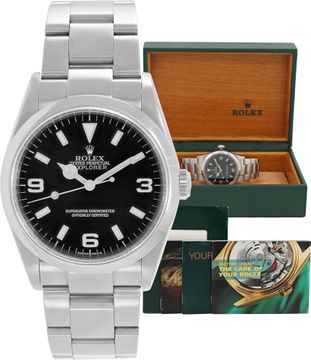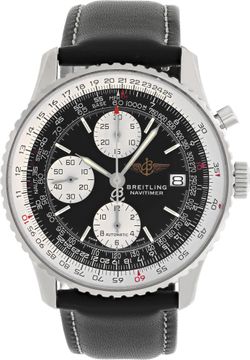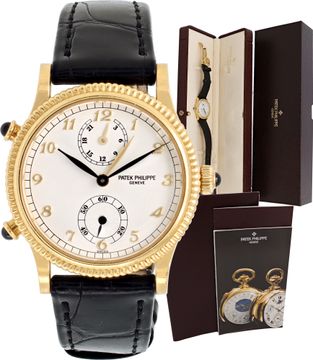Diamond Grading Explained: Cut, Clarity, Color & Carat
When it comes to purchasing a diamond, whether for an engagement ring or anniversary gift, understanding diamond grading is essential. The world of diamonds can seem complex and overwhelming, but mastering the fundamentals of diamond evaluation will empower you to make informed decisions. At the heart of diamond grading lies the internationally recognized system known as the "4 Cs" - Cut, Clarity, Color, and Carat weight.
Developed by the Gemological Institute of America (GIA) in the 1950s, the 4 Cs have become the universal standard for diamond evaluation worldwide. This comprehensive grading system provides a consistent method for assessing diamond quality, allowing buyers and sellers to communicate clearly about a diamond's characteristics and value. Understanding these four critical factors will help you navigate the diamond market with confidence and select the perfect stone for your needs.
Cut: The Foundation of Diamond Brilliance
Among the 4 Cs, cut is often considered the most important factor in determining a diamond's beauty and overall appeal. Cut refers not to the diamond's shape, but rather to how well the diamond has been fashioned from its rough state. The quality of a diamond's cut directly impacts its ability to reflect light, creating the brilliance, fire, and scintillation that make diamonds so captivating.
Understanding Cut Grades
Diamond cut is graded on a scale from Excellent to Poor:
Excellent Cut: These diamonds exhibit exceptional brilliance and fire, with precise proportions that maximize light return. Light enters the diamond through the crown and reflects internally before returning to the viewer's eye, creating maximum sparkle.
Very Good Cut: These diamonds offer excellent brilliance with slight variations in proportions. They represent outstanding value while still delivering exceptional visual appeal.
Good Cut: These diamonds provide good brilliance and represent a balance between quality and value. They may have minor proportion variations that slightly reduce light performance.
Fair and Poor Cut: These grades indicate significant proportion issues that noticeably impact the diamond's ability to reflect light, resulting in diminished brilliance and fire.
The Science Behind Cut Quality
A diamond's cut involves precise mathematical calculations to achieve optimal light performance. The angles and proportions of each facet must work in harmony to create the ideal path for light to travel through the stone. When light enters a well-cut diamond, it bounces from facet to facet before returning to the eye as white light (brilliance) and colored light (fire).
Key factors that determine cut quality include:
- Table percentage (the flat top surface of the diamond)
- Crown angle and height
- Pavilion angle and depth
- Girdle thickness
- Culet size
- Overall symmetry and polish
Clarity: The Window to Diamond Purity
Diamond clarity refers to the absence of inclusions (internal characteristics) and blemishes (external characteristics) in a diamond. Since diamonds form deep within the earth under extreme pressure and heat, most contain unique birthmarks that affect their clarity grade. These characteristics serve as a diamond's fingerprint, making each stone unique.
The Clarity Grading Scale
The GIA clarity scale ranges from Flawless to Included:
Flawless (FL): No inclusions or blemishes visible under 10x magnification. These diamonds are extremely rare and command premium prices.
Internally Flawless (IF): No inclusions visible under 10x magnification, but minor blemishes may be present on the surface.
Very Very Slightly Included (VVS1 and VVS2): Inclusions are extremely difficult to see under 10x magnification, even for trained gemologists.
Very Slightly Included (VS1 and VS2): Minor inclusions are visible under 10x magnification but are typically not visible to the naked eye.
Slightly Included (SI1 and SI2): Inclusions are noticeable under 10x magnification and may be visible to the naked eye, particularly in larger diamonds.
Included (I1, I2, I3): Inclusions are obvious under 10x magnification and clearly visible to the naked eye, potentially affecting the diamond's transparency and brilliance.
Types of Inclusions and Blemishes
Common inclusions include crystals (foreign materials trapped within the diamond), feathers (internal cracks), clouds (clusters of tiny crystals), and pinpoints (tiny crystals that appear as small dots). Blemishes may include scratches, nicks, or polish lines on the diamond's surface. The size, number, position, and visibility of these characteristics determine the clarity grade.
Color: The Spectrum of Diamond Beauty
Diamond color grading evaluates the absence of color in white diamonds. The less color a diamond exhibits, the rarer and more valuable it becomes. Most diamonds contain traces of yellow or brown, with truly colorless diamonds being exceptionally rare and highly prized.
The Color Grading Scale
The GIA color scale ranges from D (colorless) to Z (light yellow or brown):
Colorless (D, E, F): These diamonds exhibit no color when viewed face-down through the pavilion by a trained gemologist. D-grade diamonds are completely colorless and represent the pinnacle of diamond color quality.
Near Colorless (G, H, I, J): These diamonds show slight color when examined by a gemologist but appear colorless when viewed face-up in a setting. They offer excellent value while maintaining beautiful appearance.
Faint Color (K, L, M): These diamonds show noticeable color to a gemologist, and may display slight color when viewed face-up in a setting, particularly in larger carat weights.
Very Light and Light Color (N-Z): These diamonds display obvious color that is visible to the untrained eye.
Factors Affecting Color Perception
Several factors influence how color appears in a mounted diamond. The setting metal can enhance or mask color - white metals like platinum and white gold make color more noticeable, while yellow gold can mask slight yellow tints. The diamond's size also affects color visibility, as color becomes more apparent in larger stones. Lighting conditions and surrounding colors also play a role in color perception.
Carat Weight: Understanding Diamond Size
Carat weight measures a diamond's mass, with one carat equaling 200 milligrams or 0.2 grams. The carat system originated from the carob seed, which ancient traders used as a standard for weighing precious stones due to their uniform weight. Today, digital scales ensure precise measurements to the hundredth of a carat.
Carat Weight vs. Size Perception
While carat weight is often associated with size, it's important to understand that carat weight measures mass, not visual size. A diamond's cut proportions significantly impact how large it appears. A well-cut diamond will appear larger than a poorly cut diamond of the same carat weight because it reflects light more effectively and has better proportions.
Popular Carat Weights and Value Considerations
Certain carat weights are particularly popular, including 0.50, 0.75, 1.00, 1.50, and 2.00 carats. These "magic numbers" often command premium prices due to their psychological appeal. However, choosing a diamond slightly below these weights (such as 0.90 carats instead of 1.00) can provide significant savings while maintaining nearly identical visual impact.
The relationship between carat weight and price is not linear. Diamond prices increase exponentially with carat weight because larger rough diamonds are exponentially rarer than smaller ones. A 2-carat diamond will cost significantly more than twice the price of a 1-carat diamond of similar quality.
How the 4 Cs Work Together
Understanding how the 4 Cs interact is crucial for making informed diamond purchases. Each factor influences the others, and finding the right balance depends on your priorities and budget. For example, a slightly lower color grade might be acceptable if you prioritize a larger carat weight, while someone valuing brilliance above all else might choose an excellent cut grade over higher color or clarity.
Setting Priorities Based on Your Needs
For Maximum Brilliance: Prioritize cut quality above all other factors. An excellent cut will maximize the diamond's light performance and visual appeal.
For Budget Optimization: Consider diamonds in the G-I color range and VS2-SI1 clarity range, which offer excellent value while maintaining beautiful appearance.
For Investment Purposes: Focus on higher grades across all 4 Cs, particularly cut and color, as these factors most significantly impact long-term value retention.
For Vintage or Antique Settings: Consider how the setting style will complement the diamond's characteristics, as some settings can enhance or mask certain quality factors.
Certification and Documentation
When purchasing a diamond, always insist on proper certification from reputable gemological laboratories. The most respected institutions include the Gemological Institute of America (GIA) and American Gem Society (AGS). These certificates provide unbiased assessment of the diamond's 4 Cs and serve as important documentation for insurance and resale purposes.
A quality certificate should include detailed information about each of the 4 Cs, along with additional characteristics such as fluorescence, symmetry, and polish. Some certificates also include plotting diagrams that map the diamond's unique characteristics, serving as a fingerprint for identification purposes.
Making Your Diamond Selection
Armed with knowledge of the 4 Cs, you're prepared to make an informed diamond purchase. Remember that the "best" diamond is the one that meets your specific needs, preferences, and budget. Consider factors such as the intended use, setting style, and personal priorities when evaluating different options.
When shopping for diamonds, examine stones under various lighting conditions and compare similar grades to understand the differences. Don't hesitate to ask questions about the grading process and request to see the certificate before making your decision. A reputable jeweler will be happy to educate you about the diamonds they offer and help you find the perfect stone.
The diamond market offers options for every budget and preference. Whether you're seeking a classic solitaire engagement ring, elegant diamond earrings, or a stunning tennis bracelet, understanding the 4 Cs ensures you'll make a purchase you'll treasure for a lifetime. These timeless gems represent emotional milestones and cherished memories that will be passed down through generations.
Selling Your Diamond Jewelry with Confidence
At Gray and Sons Jewelers, we understand that life circumstances sometimes require parting with treasured diamond pieces. Whether you're upgrading to a larger stone, changing your style preferences, or need to liquidate assets, our online buying platform, Sell Us Your Jewelry, provides a professional and transparent solution for selling your diamond jewelry. Our certified gemologists understand the intricacies of diamond grading and use their expertise to accurately assess your diamonds based on the 4 Cs - cut, clarity, color, and carat weight. We evaluate each piece thoroughly, considering current market conditions and the specific characteristics that make your diamonds valuable. With our deep understanding of diamond quality factors and market trends, Sell Us Your Jewelry ensures you receive fair, competitive offers that reflect the true value of your diamond investments. Trust in our expertise and reputation to help you navigate the selling process with confidence and ease.
Understanding Watch Complications: Moonphase & Chronograph
NEXT ARTICLE
Timeless Elegance: Why Vintage Pocket Watches Make Unforgettable Summer 2025 Wedding Gifts











